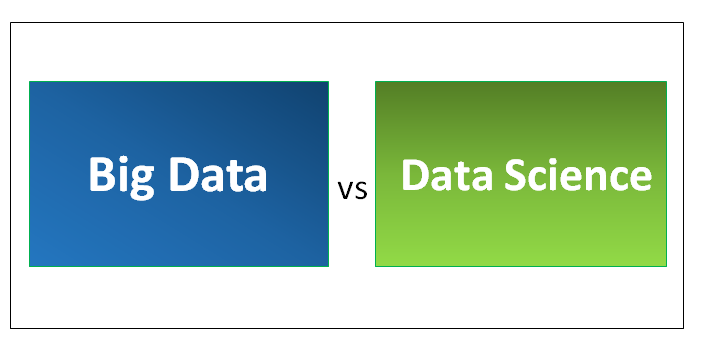Big Data vs Data science

 Currently, all of us are seeing an unprecedented growth of data generated worldwide and on the internet to outcome in the concept of big data. Data science is little a problematic area due to the complications involved in combining and applying different algorithms, methods, and sophisticated programming procedures to do intelligent analysis in massive volumes of data. Hence, the field of data science has updated from big data, or big data and data science are inseparable. However, there are several differences between big data and data science.
Currently, all of us are seeing an unprecedented growth of data generated worldwide and on the internet to outcome in the concept of big data. Data science is little a problematic area due to the complications involved in combining and applying different algorithms, methods, and sophisticated programming procedures to do intelligent analysis in massive volumes of data. Hence, the field of data science has updated from big data, or big data and data science are inseparable. However, there are several differences between big data and data science.
This concept refers to the vast collection of heterogeneous data from different sources and is not usually available in standard database formats we are generally aware of. Big data encompasses all kinds of data, namely structured, unstructured information, and semi-structured, which can be easily found on the internet. Big data includes,
- Unstructured data – social networks, emails, online data sources, blogs, tweets, digital images, digital audio/video feeds, mobile data, web pages, sensor data, and so on.
- Semi-structured – system log files, XML files, text files, etc.
- Structured data – RDBMS (databases), transaction data, OLTP, and other structured data formats.
Therefore, all information and data irrespective of its kind or format can be assumed as big data. Big data processing starts with aggregating data from multiple sources.
Provided below are some of the significant differences between big data and data science concepts:
- Companies need big data to improve efficiencies, understand new markets, and enhance competitiveness. In contrast, data science provides the methods or mechanisms to understand and utilize the potential of big data on time.
- Currently, for organizations, there is an unlimited amount of valuable data that can be collected. Still, to use all this data to extract relevant information for organizational decisions, data science is required.
- Big data is represented by its velocity variety and volume (known as 3Vs), while data science gives the techniques or methods to analyze data provided by 3Vs.
- Big data grants the potential for performance. However, digging out insight data from big data for utilizing its potential for boosting performance is a critical challenge. Data science uses experimental and theoretical approaches in addition to deductive and inductive reasoning. It takes responsibility to uncover all invisible insightful information from a complicated mesh of unstructured data, thus allowing the business to utilize the power of big data.
- Big data analysis does the mining of useful information from large volumes of datasets. Contrary to the report, data science uses machine learning algorithms and statistical methods to tell the computer to learn with less coding to make predictions from big data. Hence data science must not be compared with big data analytics.
- Big data relates more to technology (Hive, Hadoop, Java, etc.), distributed computing, and analytics software and tools. It is opposite to data science, which aims at strategies for business decisions, data dissemination using mathematics, statistics, and data structures and procedures mentioned earlier.
The differences between data science and big data it may be recognized that data science is included in the concept of big data. Data science plays an essential role in various application areas. Data science uses big data to derive crucial insights through a predictive analysis where results are used to make perfect decisions. Thus, data science is included in big data rather than the other way round.









Add comment